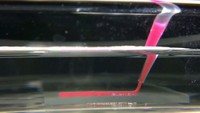Advertisement
Grab your lab coat. Let's get started
Welcome!
Welcome!
Create an account below to get 6 C&EN articles per month, receive newsletters and more - all free.
It seems this is your first time logging in online. Please enter the following information to continue.
As an ACS member you automatically get access to this site. All we need is few more details to create your reading experience.
Not you? Sign in with a different account.
Not you? Sign in with a different account.
ERROR 1
ERROR 1
ERROR 2
ERROR 2
ERROR 2
ERROR 2
ERROR 2
Password and Confirm password must match.
If you have an ACS member number, please enter it here so we can link this account to your membership. (optional)
ERROR 2
ACS values your privacy. By submitting your information, you are gaining access to C&EN and subscribing to our weekly newsletter. We use the information you provide to make your reading experience better, and we will never sell your data to third party members.
Materials
Sticky Secrets Of Spiders’ Glue
Critter chemistry: High speed imaging reveals the stickiness of spiders’ glue is specific to their native habitats
by Bethany Halford
November 9, 2015
| A version of this story appeared in
Volume 93, Issue 44
To learn how to make glues that work well even in humid environments, where most adhesives tend to lose their stickiness, scientists are gathering clues from spider glue. Spiders rely on sticky drops of glue dotted along their webs to snare insect prey. If a spider wants to eat regularly, that glue has to work well regardless of humidity. Researchers led by the University of Akron’s Ali Dhinojwala studied five spider species, each of which lives in an area with a different humidity. They found that each spider’s glue achieved its maximum stickiness in the humidity of its native environment (ACS Nano 2015, DOI: 10.1021/acsnano.5b05658). High-speed photography revealed that the spiders achieved maximum stickiness by modulating the glue’s viscosity. As humidity increases, the glue’s viscosity decreases. There is a sweet spot for each spider where its glue has just the right viscosity for catching prey. The spiders use different types and amounts of hygroscopic organic salts to achieve the best glue viscosity for the humidity of their habitat.





Join the conversation
Contact the reporter
Submit a Letter to the Editor for publication
Engage with us on Twitter